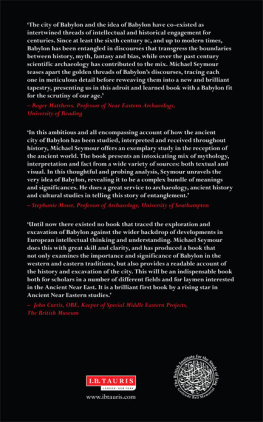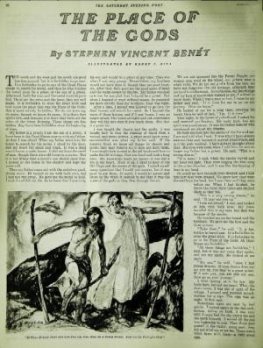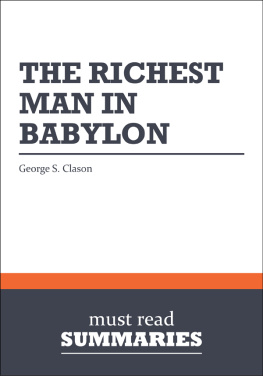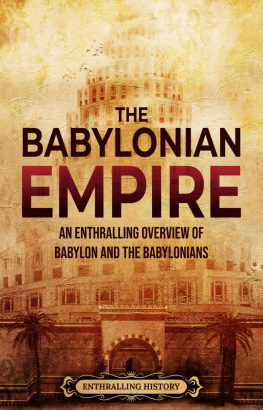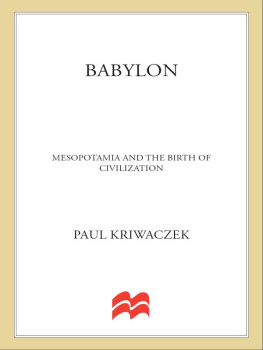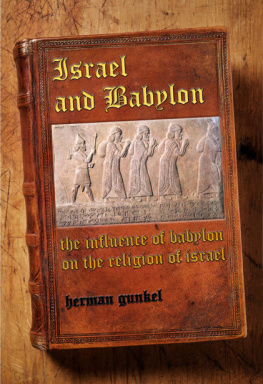
Michael Seymour is Research Associate in the Department of Ancient Near Eastern Art at The Metropolitan Museum of Art, New York. Prior to joining the Metropolitan Museum he worked for the Department of the Middle East at the British Museum, where he was co-curator of the special exhibition Babylon: Myth and Reality. He is a consultant to the World Monuments Fund on the site of Babylon, and an editor of the journal Iraq. He is co-author (with I. L. Finkel) of Babylon: Myth and Reality (2008).
The city of Babylon and the idea of Babylon have co-existed as intertwined threads of intellectual and historical engagement for centuries. In the recent past Babylon was an emblem for Saddam Husseins control over Iraqs past (ancient Babylon), present (reconstructed Babylon), and future (eternal Babylon). Since at least the sixth century BC , and up to modern times, Babylon has been entangled in discourses that transgress the boundaries between history, myth, fantasy and bias, while over the past century scientific archaeology has contributed to the mix. Michael Seymour teases apart the golden threads of Babylons discourses, tracing each one in meticulous detail before reweaving them into a new and brilliant tapestry, presenting us in this adroit and learned book with a Babylon fit for the scrutiny of our age.
Roger Matthews, Professor of Near Eastern Archaeology, University of Reading
In this ambitious and all encompassing account of how the ancient city of Babylon has been studied, interpreted and received throughout history, Michael Seymour offers an exemplary study in the reception of the ancient world. Multiple manifestations of the notion of Babylon are explored, revealing the extent to which ancient civilisations have been appropriated according to different cultural contexts and priorities. The book presents an intoxicating mix of mythology, interpretation and fact from a wide variety of sources: both textual and visual. Through each of the chapters we see the exciting and complex journey that antiquities undertake once retrieved from the earth in which they were buried. One of the most important findings of the work is the extent to which ancient Mesopotamian culture is shown to have lived on in a range of conflicting and successive contexts. In this thoughtful and probing analysis, Seymour unravels the very idea of Babylon, revealing it to be a complex bundle of meanings and significances. He does a great service to archaeology, ancient history and cultural studies in telling this story of entanglement.
Stephanie Moser, Professor of Archaeology, University of Southampton
This is a brilliant first book by a rising star in Ancient Near Eastern studies. It comes at a critical moment when the ancient city of Babylon is under the spotlight as never before. After the coalition invasion of 2003 Babylon was turned into a military camp to universal international condemnation. Now the World Monuments Fund is helping with the conservation of the site and application has been made for Babylon to become a World Heritage Site. There have also been three major exhibitions about Babylon in the last few years, in Paris, Berlin and London, all with sumptuous catalogues, and the famous Cyrus Cylinder, found at Babylon in 1879, is currently the subject of a touring exhibition. Yet until now there existed no book that traced the exploration and excavation of Babylon against the wider backdrop of developments in European intellectual thinking and understanding. Michael Seymour does this with great skill and clarity, and has produced a book that not only examines the importance and significance of Babylon in the western and eastern traditions, but also provides a readable account of the history and excavation of the city. This will be an indispensable book both for scholars in a number of different fields and for laymen interested in the Ancient Near East.
John Curtis, OBE, Keeper of Special Middle Eastern Projects, The British Museum
BABYLON
Legend, History and the Ancient City
M ICHAEL S EYMOUR


This publication is supported by the AHRC.
Each year the AHRC provides funding from the Government to support research and postgraduate study in the arts and humanities. Only applications of the highest quality are funded and the range of research supported by this investment of public funds not only provides social and cultural benefits but also contributes to the economic success of the UK. For further information on the AHRC, please go to: www.ahrc.ac.uk
Published in 2014 by I.B.Tauris & Co Ltd
6 Salem Road, London W2 4BU
175 Fifth Avenue, New York NY 10010
www.ibtauris.com
Distributed in the United States and Canada
Exclusively by Palgrave Macmillan
175 Fifth Avenue, New York NY 10010
Copyright 2014 Michael Seymour
The right of Michael Seymour to be identified as the author of this work has been asserted by him in accordance with the Copyright, Designs and Patents Act 1988.
All rights reserved. Except for brief quotations in a review, this book, or any part thereof, may not be reproduced, stored in or introduced into a retrieval system, or transmitted, in any form or by any means, electronic, mechanical, photocopying, recording or otherwise, without the prior written permission of the publisher.
ISBN: 978 1 84885 701 8
eISBN: 978 0 85773 607 9
A full CIP record for this book is available from the British Library
A full CIP record is available from the Library of Congress
Library of Congress catalog card number: available
Already was he bending over to
Embrace my masters feet. Brother, said he,
Dont, for youre a shade, and shade you view.
Standing, he said, You know now the degree
Of love that warms me to you when it brings
Me to forget our insubstantiality:
I treat our shadows still as solid things.
Statius, author of the Thebaid, meets Virgil in Purgatory (Dante, Purgatorio 21.1306)
CONTENTS
LIST OF ILLUSTRATIONS
Hammurabi of Babylon (17901752 BC ) stands before the sun-god Shamash, from the Code of Hammurabi. Muse du Louvre. Photograph courtesy of Ariane Thomas.
Stela of Marduk-apla-iddina II (721710 BC , 703702 BC ). Vorderasiatisches Museum, Staatliche Museen zu Berlin. Photograph bpk/Vorderasiatisches Museum, SMB/Olaf M.Temer.
Reconstructed view of sixth-century BC Babylon from the north. Photograph bpk/Vorderasiatisches Museum, SMB/Gudrun Stenzel.
The Tower of Babel in the Bedford Hours. British Library. Photograph: public domain.
The destruction of Babylon in the Apocalypse of Angers, 137782. Chteau dAngers. Photograph: Kimon Berlin/Wikimedia Commons.
The story of the doomed lovers Pyramus and Thisbe depicted on a medieval ivory casket. French, early fourteenth century. The Metropolitan Museum of Art, gift of J. Pierpont Morgan, 1917 (17.190.173a, b); The Cloisters Collection, 1988 (1988.16). Image The Metropolitan Museum of Art.
Albrecht Drer, The Whore of Babylon, the Destruction of Babylon, and the Knight Called Faithful and True, c.14967. The Metropolitan Museum of Art, Rogers Fund, 1918 (18.65.8). Image The Metropolitan Museum of Art.
Pieter Bruegel the Elder, Tower of Babel, 1563. Kunsthistorisches Museum, Vienna. Photograph The Bridgeman Art Library/Getty Images.
Next page
